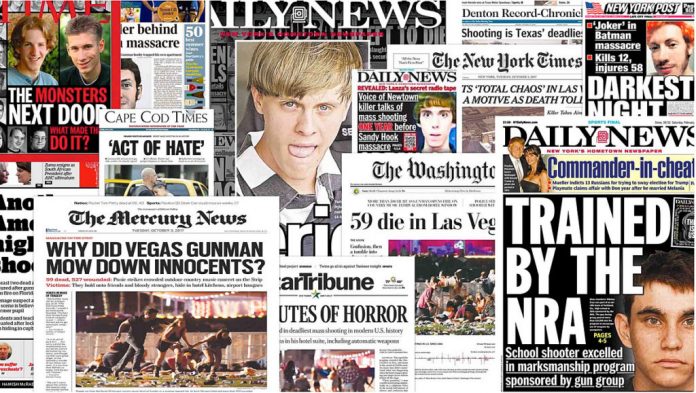
CNN and several others are carrying the the story that the United States has breached a crucial and terrifying milestone early this year, 400 ‘mass shootings‘ in only 203 days.
Is that bad?
It sounds bad.
That’s bad, right?
Yes, it is. But like most headlines, it doesn’t communicate much (any) nuance. It just bludgeons you in the face with the item the writer wants you to ruminate on and none of the surrounding data, especially contextual data. We’re not that far ahead from the three prior years at this point in time, and 2020’s violence ramped up late compared to the violent curves we saw in 2021 and 2022. 2020 was a notable anomaly while 21 and 22 followed 20’s ‘new normal’ numbers in a less compressed way.
Context
If we look at trends and compare them to recent years we see that 2023 is continuing the “new normal” summer violence curve volume set by the lockdown and the riots. People continue to be discontent and certain segments of the population for various reasons are expressing that very violently. However if we look at more data from more than just the wildly overbroad definition of ‘mass shooting’ we do see some signs of progress back.
Will we likely still have a 600+ mass shooting year? Probably. Could we crest 2021’s peak of 690? Maybe, but we also might trend out in the fall.
But if we look at localized barometers, like Chicago, we see more promise than the doom of the headlines suggests.

2023 is looking slightly but notably better than the previous three years with homicides in July, a bad month historically, down by 5% from 2022 and drifting closer to the average of 360. July is only projected to be roughly 7.5% over average where it was 32.7% above in 2021.
This, baring another negative global scale impact on good order (like shutting down massive portions of the legitimate economy and rage baiting social pain points), hopefully signals a continued cooling off that those tensions. Other cities and states are reporting better than last year violent crime numbers while certain segments are still seeing spikes.
Realities Collide
The question is: Does the number of ‘mass shootings’ going up matter if injuries and homicides are coming back down?
Yes, but not from the banner waving gun control idiots. It matters in how we see and track both triggering pressure break and retaliatory action. The various socio-economic segments have wildly variable trigger points that do result in a similar retaliation, violence.
We are seeing several rather painful realities clashing in 2023 and if you compare things like violent criminal events against economics and socio-political diatribes, we see patterns emerge. In a macabre way it’s like weather prediction, you can see the pre-violence indicators flare up but that doesn’t give you the tools to fix the conditions or influence them in a timely manner. It doesn’t even predict an actual event, just the conditions that might trigger one.
We have any number of social pressure points that are creating hot spots in todays climate. It is overwhelmingly socially triggered large scale violence we are talking about. Whether criminal retribution, insult retribution, family stress, or radicalized retributive violence, it is overwhelmingly a social event and not a monetary one.
‘Mass shootings’ spiked 46.2% in 2020, and reaching 400 events in 239 days instead of barely passing 400 on the 356 day mark in 2019. 2019 was also the worst year of the previous 4, with 2016, 2017, and 2018 under 400 incidents. Both 2017 and 2018 didn’t reach 350 incidents. 2018’s 336 incidents to 2021’s 690 represented a 105% swing upwards in just three years.
We are, if indicators remain as they are, looking at a small decrease in overall deaths for the year over year. What we are fighting this year more than the previous two is people are back outside in spades and the ones that have been pissed off over X, Y, or Z motive are mobile with the rest while the world at large is chilling a little bit.
Pressures and tolerances are also continuing to shift, new hot spots are forming as old ones cool which may offset the tempers that are cooling. The burn out from previous years is fighting the heightened mobility of people and grudges are still being settled as new ones are formed. Example: The drive-by shooting is at an all time favorite position, in recent memory, as a method for dealing with problem individuals or groups for [insert reason]. Many of the ‘mass shootings’ listed in the elevated total are drive by attacks for criminal or social retaliation.
Mass murders look to be tracking the same, or unfortunately higher in occurrences than last year, but with only one incident so far in excess of 10 dead (11) in California and only 4 incidents with 10 or more dead and injured combined, casualties may end up tracking in the same direction as mass shootings with a lower number and some progress made back towards the 2010’s rates.
The long way home
But the reality is… we are in a new normal, we are hotter tempered and shorter fused with a dimmer outlook than ten years ago. It is a time of many discontent points and those are going to take some big socio-economic wins and realityto settle into the collective consciousness to offset and cool peoples’ heels. The points of contention are hot, misunderstanding the other side is leveraged for political capitol, and in many instances the people in charge are so catastrophically ignorant or couldn’t care less as long as their pet project gets its paycheck.
Law enforcement is a down profession right now and civility towards one another is treated as a polite joke many instances with the giving or taking of offense. Behaviors are excused or comically over reviled, punishments vary wildly, speed and consistency in justice is seen as absent, plenty of stupid events are still crimes that arguably should not be. None of these circumstances or prevailing attitudes supports the general welfare of the nation. The millennial adult outlook is a bleak one.
Leaders are not inspiring confidence, they are seen either as grifters or incompetent. They aren’t taking the public attitudes and concerns and then finding responsible solutions in logical policy, they are using the shortcuts that sound best to the vague opinions from the public that will earn them their sweet sweet electability points for the next popularity contest we call elections.
The whole of the 20’s is likely to be a rough one, but the later half may bring us back to some 2010’s levels if we can tame back our wilder societal impulses of incivility, campy rhetoric, and overly inflammatory hyperbole because it fits our pet narrative about the more complex realities.
The year marches onward.



